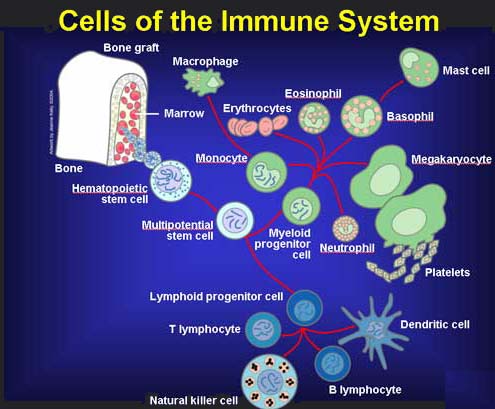Scientists Find Way to Revive Immune Cells of HIV Patients
 Canadian and American researchers have discovered a method to revive immune cells that become "exhausted" from fighting the Human Immunodeficiency Virus (HIV) that leads to AIDS, thereby restoring the person’s immune system’s ability to fight the infection.
Canadian and American researchers have discovered a method to revive immune cells that become "exhausted" from fighting the Human Immunodeficiency Virus (HIV) that leads to AIDS, thereby restoring the person’s immune system’s ability to fight the infection.
The research was led by Dr Mario Ostrowski, who is based at the Faculty of Medicine at the University of Toronto, Canada, and Dr Douglas Nixon, from the Division of Experimental Medicine at the University of California, San Francisco, USA. They discovered the large-scale presence of a molecule called Tim-3 on immune system cells which are "exhausted" from fighting HIV infection.
The study published in the 10th November issue of the Journal of Experimental Medicine said in a typical viral infection, those cells rapidly multiply, kill off virus-infected cells and stimulate other cells in the immune system. Eventually the CD8+ T cells become less functional and enter into a state known as "exhaustion".
The researchers found that by blocking the activity of Tim -3, the cells improved their function and were able to fight against HIV. Research co-principal author Brad Jones said, "In the typical course of HIV infection, an initial burst of very high levels of the HIV virus is brought partially under control by the infected person's immune system, specifically by an immune system cell called a CD8+ killer T cell.
"In the majority of cases without antiretroviral drug treatment, the immune system is eventually overwhelmed and progression to AIDS occurs."
TIM-3 is a glycoprotein expressed by killer T cells. When expressed, TIM-3 suppresses the production of more killer cells and cytokines, the signaling proteins that help to alert and recruit other immune system cells in the fight against infection and pathogens.
Jones said, "We felt that if we could understand these mechanisms, we may be able to intervene and re-energize the immune system."
For the study, Jones and colleagues examined and manipulated T cells taken from patients with HIV and they found that high levels of TIM-3 were linked to higher levels of HIV infection. They also found that blocking TIM-3 reversed this effect and that the TIM-3 expression stayed high even when the viral loads went down. This led the researchers to believe that once TIM-3 expression is switched on, in some people it cannot be reversed and disrupting its signal could be a way to treat HIV that is treatment resistant.
Ostrowski said, "To test this, we produced a molecule capable of blocking the Tim-3 signal and studied the effect that this had on CD8+ T cell function in vitro. We observed that blocking the Tim-3 pathway rescued those cells and restored their ability to fight off infection," he added.
Research co-principal author Lishomwa Ndhlovu said, "From these results, we predicted that the Tim-3 pathway might be manipulated to potentially confer clinical benefit and serve as a promising new target for clinical intervention to decrease the severity of HIV infection."
In conclusion the researchers said, "But our findings may provide a new direction to vaccines and therapies that will potentially reverse these dysfunctional cells and allow them to control HIV-1 replication," said Ndhlovu.